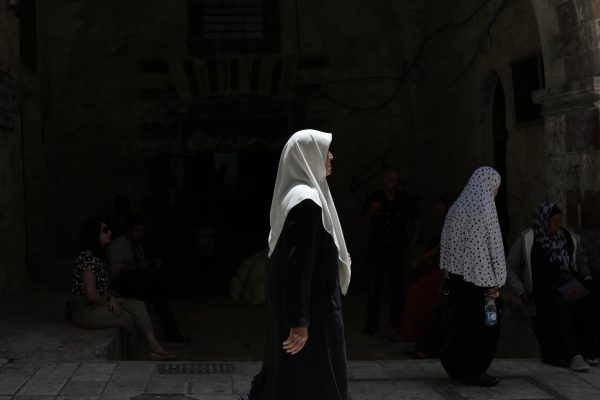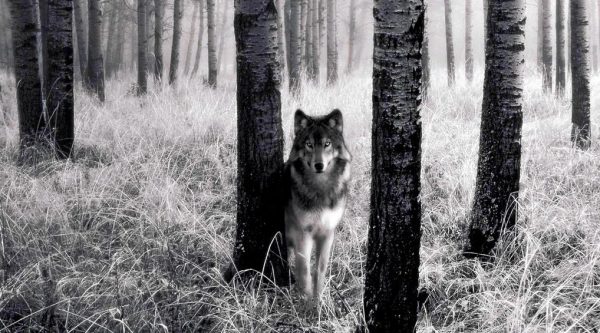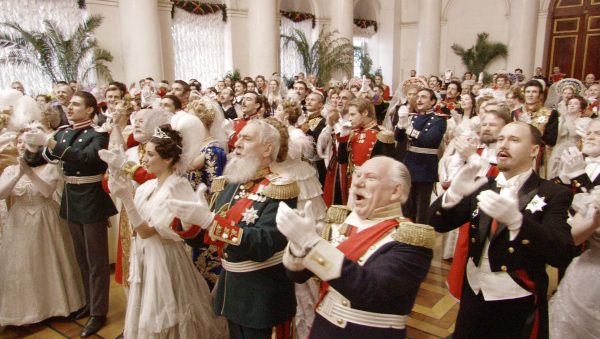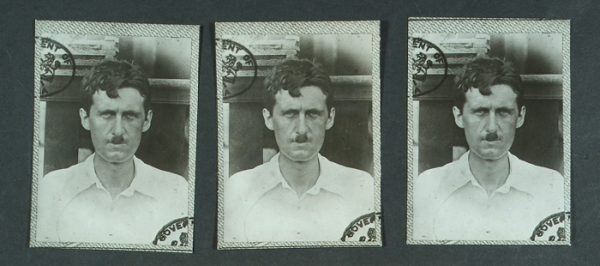ARTISTIC COLLABORATION, in all disciplines, is — and has ever been — the exception. In its unmitigated form — taking place between two or more individuals working to one end, and with the particulars of responsibility dissolved in consensus — collaboration has proven to be a versatile and available mode of artistic production.
So why is collaboration given so wide a berth? That, historically, so large a proportion of collaborative works come over apologetic — mollifying their collaborative character — would suggest that it is in the understanding of collaborative art, and not the undertaking, where lies the issue. And for this reason: collaborative art overturns our perception of ‘the artist’, to which we hold fast, even if we don’t know it.
It is important to clarify what I mean by collaboration. There are media that necessarily utilise a workforce, the craftsmanship of others, that are inherently ‘collaborative’ but to which, for the purposes of this article, we will not apply the term collaboration. A big-scale beehive of a collaborative endeavour, a film congregates large numbers of individuals, each a satellite contributor and specialist — in cinematography, animation, sound or wardrobe design. But if a film’s achievement may be credited to individuals in titled, subsidiary roles, it cannot satisfactorily be called a collaboration. How far can a film’s scriptwriter be said to have collaborated with its stunt man? There is no transaction of ideas, no arbitration; they are connected indirectly by an intermediary in the form or forms of director and producer. Collaboration in film, and to the same degree, theatre, is contingent upon a selection or hiring process; ‘collaborators’ are delegated to and in most circumstances work apart. In the critical theory of François Truffaut and other contributors to Cahiers du Cinéma, the success (or failure) of a film is attributable only to its director, Truffaut’s apiculturist ‘auteur’. If I am inclined to disagree with Truffaut’s solo-project take on the film industry, I am also unable to name his cameramen, his editors, his supporting casts. Ai Weiwei’s Sunflower Seeds is a similar instance of the figure-headed or curated ‘collective’ artwork. The Beijing artist employed over a thousand artisans over five years to hand-paint the porcelain counterfeits. But it is understood that the men and women that mined, moulded and painted the miniatures — who feature in the documentary companion-piece — are not collaborators. Their collaboration is practical necessity, not aesthetic. Even so, as an artist interested in the anthropological provenance of the object and symbol — best illustrated by his photo triptych Dropping a Han-dynasty Urn (1995) — it is the sense of a vestigial community that makes for much of the impact of Weiwei’s latest work, which makes spectacle of human industry.
But when two persons jointly undertake the same, undifferentiated role — as in the case of Michael Powell and Emeric Pressburger and the Coen brothers, where the distinctions between writer, director and producer are blurred — there is real collaboration. There is equality in consensus and, importantly, no telling who did what. Collaboration, in this unmitigated form, is more common to the modern and contemporary art world, particularly among conceptual and installation artists of the last fifty years. Bernd and Hilla Becher began collaborating as early as 1959 with their square-on black and white photography of industrial landscapes, and the uniformed Gilbert & George in 1970 with The Singing Sculpture. Christo and Jeanne-Claude conceived many of their most famous, large-impact field works — Valley Curtain (1972), Running Fence (1976) and The Pont Neuf Wrapped (1985) — in Christo’s name, only later in 1994 acknowledging their collaboration on every colour-textile work produced to date. Likewise, American artist Edward Kienholz became Kienholz, one half of a creative partnership with his wife, Nancy Reddin, when an exhibition catalogue confirmed that all his pop-installations since 1972 had been co-produced. All these artist-sets, excepting Gilbert & George, whose geminate self-representation is integral to their collaborative identity, are linked by marriage. Collaboration is a lifelong commitment. But still more interesting is the hesitation by some artists to declare collaboration. This, it seems to me, has to do with the public and institutional regard for collaborative art. By these characteristics — the familial, long-term and exclusively collaborative — the artists resemble the artist singular, and are consistent with the accepted configuration of the author-artist as solitary and hermetic. Their collaboration is somehow vitiated and made palatable to the public, because they are, as kin, of one mind.
It is possible to collaborate without forfeiting autonomous artistic identity. Pablo Picasso and Georges Braque did so when they co-founded Cubism. The two artists, sharing a common influence in Paul Cézanne, attracted to his geometrisation of forms and the compartmental surfaces of his paintings, began in 1908 to develop a style of painting in fidelity to what they considered the plural and cumulative nature of seeing. Painting separately — though allegedly side-by-side — on canvasses their own, Picasso and Braque worked closely in consolidation of a technique, drawing upon very disparate artistic backgrounds: Braque’s in Fauvism and Picasso’s aspiring to the baldness of Primitivist, African and Iberian art. Their six-year collaboration was interrupted by the outbreak of war in 1914 and was not renewed, but their impact upon European art was by this time firmly established. Although it is said that Braque’s paintings of this period may be mistaken for Picasso’s and vice versa, each artist retained at all times his distinct artistic identity, neither one eclipsing the other. Thus, Cubism’s collaborative origins never troubled anyone. Still, this particular collaboration of idea eludes the question of whether collaboration of the material kind — a collaboration of idea, brought to bear upon a single surface — can overcome the fixed public regard for autonomy in creativity.
That collaboration confounds a formal understanding of artistic identity is certain. Collaboration or co-authorship upends our perception of the role of artist — the monogrammed, dark-circled solipsist — and drives a wedge between ourselves and the gallants of literature and cinema, who we like to idolise and study as close as the biopic and the poster shop would allow. This may explain why collaboration is most seldom seen in poetry. It is the poet, after all — before the novelist, the painter and the filmmaker — whose contours as artist are most immovable. In poetry, above all other art forms, the cult of the individual is hardest wired, and so we may look to poetry for what determines to a lesser degree the success of collaboration in other art forms. Of all disciplines, it is in reading poetry that we are least able — or least disposed — to dissociate the artist from his work. Roland Barthes’ ‘Death of the Author’ and T. S. Eliot’s ‘Tradition and the Individual Talent’ partake of a long and extant tradition of critical debate as to the role and the textual presence-absence of the author. In spite of critical attempts to free the work of its writer, there remains an appetite for artists’ letters and literary criticism of a biographical bent. This tenacity of the author resides even in the metonymic association of author and works — we read Salinger; ‘I’m getting stuck into Gaskell‘ — and in Harold Bloom’s canon like so much statuary. Since the advent of Confessionalism in the 1950s, and with it the relaxing of the propriety of poetic subject, the interval between poet and reader has grown narrower still. This often morbidly confessional poetry dominated the latter half of the twentieth century in reaction to Eliot’s crepuscular impersonality and the New Critical school, whose objectifying, non-contextual reading of poetry rent — impermanently — the author from his text. In Robert Lowell’s Life Studies — to which the term ‘Confessional’ was first applied in 1954 — and in the work of Anne Sexton, poetry is constituted a priori, it is partial. It had no longer to be so emphatically defined by its content nor observant of an objective tablature. This generation believed there could be poetry in the saying of it; it mattered less how. (So much so that rhymed and metrical verse have still to recover their footing.) The movement thus intensified not only authorial presence in poetry but the relationship between the author and his readership.
There is a sense when reading poetry that the poem is made in the reading, that it is incomplete until a reader elects to engage reflexively with the poetic subject. A poem is between-two, transitive; it is the systole-diastole exchange of thought and feeling. Like Venn diagram or the overlapping circles of D. H. Lawrence’s ideal love — ‘when it is whole, it is dual’ — reader and poet are apart in concordance. This doubling, that is itself a collaboration between poet and reader, complicates the possibility for collaboration between poets. With the addition of a third party, and the outnumbering of poet to reader, collaboration becomes collusive. This is the first impediment to the reading, as to the writing, of collaborative poetry, and of the few examples that exist, collaborators have either safeguarded against or exploited (by inclusion of the reader against a wider audience) the conspiratorial nature of literary collaboration.
If, in visual art, collaboration masquerades as autonomous creative enterprise, in poetry it is, historically, subversive. Collaborative poetry has in almost all cases accompanied the undermining of literary covenant. The French Surrealist movement of the 1920s encouraged collaboration among its members in defiance of a prohibitively conservative literary establishment. Surrealist publications — Littérature and La Revolution Surrealiste — collated new writing techniques. Among them was André Breton’s cadavre exquis, a work of prose or poetry composed by the contributions of several authors in turn. But if collaboration is iconoclastic — not existing for its own sake but borne along by intellectual radicalism — it must also be transient. This historical precedent, the identification of collaborative art with provocation, has prevented its proper assimilation by the literary establishment and the reading public.
The poets of the New York School — John Ashbery, James Schuyler, Kenneth Koch and Frank O’Hara — are a rare, perhaps even unique, example of a literary collective to have collaborated extensively and without political agenda. Ironically named by John Bernard Myers, an art dealer and owner of Manhattan’s Tibor de Nagy gallery, the New York School was less programmatically innovative than the Surrealists, and not so earnest or self-regarding as its French namesake the École de Paris. The group were foremost friends, each possessing a distinctive style — Ashbery’s involute, thickly-textured poetry cannot easily be confused for the jerky kinetics of Kenneth Koch — but all four shared an enthusiasm for collaborative enterprise that stretched beyond their small circumference. The New York School approached collaborative compositions with the same seriousness as they applied to their own solo efforts. Collaboration was considered to be a natural development of personal undertaking, and appealed to the playful creativity and explorative intellects that first drew them together. Perhaps inspired by Breton’s Surrealist Manifesto, which urged the writing of ‘false novels’, it took Ashbery and Schuyler fifteen years to compose — piecemeal and together in person — their comic novel-length character-study A Nest Of Ninnies. But it is interdisciplinary collaboration for which the New York School are most renowned. These collaborations were so many they were commonplace: pre-empting the so-called ‘happenings’ of the following decade, the New York School took to a collaboration with the same abandon as a weekend in the Hamptons. Their collaborators were as varied as their social element, encompassing both first and second generation Abstract Expressionist painters, composers and filmmakers, and dancers of the New York City Ballet. Their collaborative enterprising brought them into frequent contact with the alumni of North Carolina’s Black Mountain College, a progressive educational institution, established in 1933. Although short-lived, closing its doors in 1957, the college taught the value of interdisciplinary collaboration, drawing the likes of John Cage, Merce Cunningham, Willem and Elaine de Kooning to its faculty and launching students Robert Rauschenberg and Cy Twombly upon the Manhattan art scene.
But of the four, the New York poet most drawn to interdisciplinary collaboration was Frank O’Hara, a galvanising presence in the art world, whose readiness to collaborate was expressive of a fêted generosity and serious-mindedness about the work of others. Composer Morton Feldman described the poet as seeming to ‘dance from canvas to canvas … from poem to poem — a Fred Astaire with the whole art community as his Ginger Rogers.’ O’Hara made Stones, a series of charcoal prints with Larry Rivers, recently exhibited in a Tibor de Nagy retrospective; provided text for Alfred Leslie’s eccentrically subtitled film, The Last Clean Shirt; and wrote the lyrics for Ned Rorem’s The Quarrel Sonata. He worked most regularly with the poet Bill Berkson on what he called ‘actual collaborations line for line’, publishing a collection of poems (Hymns of St Bridget) and devising over the Atlantic Flight 115: a Play, or Pas de Fumée sur la Piste on O’Hara’s portable typewriter. Their work together is, like O’Hara’s poetry, peripatetic and permissive of the emergent thought. O’Hara’s poetry recognises intention as illusory and is attentive, instead, to ulterior possibility — to any new idea or image — that may arise from the setting-down of thought, and from the ill fit of word to feeling. This and his precipitate approach to composition made him more adaptable to the collaborative mode, which asks that a collaborator concede to some degree those principles that would ordinarily govern his or her work. No poet could be better suited to this than O’Hara, who confided to Koch in 1956, ‘Acting isn’t so bad, actually, it makes you feel inadequate just like poetry.’ Inadequacy was to Frank O’Hara as deprivation was to Philip Larkin: incitement to write. But O’Hara’s interest in other disciplines was accessory and implement to his poetry. Writing to poet Gregory Corso of the collaborations between writers and jazz musicians of the 1950s, he confided: ‘I don’t really get their jazz stimulus but it is probably what I get from painting… that is, one can’t be inside all the time, it gets too boring and you can’t afford to be bored with poetry so you take a secondary enthusiasm as the symbol of the first.’ For O’Hara, collaboration was a catalyst, a stimulant, a means of faster negotiating and refining those impressions and images that would in due course populate his poems. This is not to diminish the value of collaboration — because it is tributary — but rather to demonstrate its importance. Collaborative practice, close-conference with another, quickens the creative mind and facilitates invention. For O’Hara, at least, the creative initiatives of others, even those at variance with his own, kept off a debilitating lethargy that endangered the quality of his work.
But we would do well not to get carried away with depicting this era as one of peculiar fecundity for interdisciplinary collaboration. Al Leslie, who collaborated frequently with O’Hara, felt acutely that his critics had difficulty conceiving of an artist who worked in more than one discipline at one time; who took a second enthusiasm equal to the first: ‘There’s always a suspicion of anybody who works well in many disciplines. I was acknowledged in them individually, but nobody saw a way to bring them all together.’ He sensed, instead, that there had to be an ‘expertise’ — in painting, for example — which could then justify ‘forays’ into alternative media. He thus considered himself an abnormality of his era: ‘It was a quintessential moment in the sense that it was a kind of public exposure that I had several public voices. At that time artists were supposed to only focus on one particular area.’ Leslie’s insight is surprising because this period of the 1950s is commonly registered to be one of artistic association, and the free-traversing of disciplines. Described by Bill Berkson as ‘a one-man movement’, Frank O’Hara certainly made it seem so. But perhaps it wasn’t that way. While there may have been cross-pollination of ideas, loose and sometime collaborations, the interdisciplinary artist was at this time an exception.
Nevertheless, the literary collaborations of the New York School — the burlesque A Nest of Ninnies and the three-legged poetry of Berkson and O’Hara — succeed by creating a cohesive poetic-narrative voice, and because we cannot help but share in their exuberance for the co-authoring process. Both works are attractive because we are drawn into closer engagement with the nature of their production; they are auto-deconstructive, art and commentary both. What is more, they antagonise the belief that poetry is rarefied; that there is the genesis of idea in solipsism. But it may also be the case that they succeed because they are comic works, and comic works do tend to discourage critical opinion and so escape the eyeglass. What has yet to be discovered is whether poetry may be affective and co-authored.
Might it not be a simple case of readerly adjustment? We do not, on first reading, read falteringly through T. S. Eliot’s ‘The Waste Land’ second-guessing the interstices of Ezra Pound’s edit, and our first reaction to Raymond Carver’s What We Talk About When We Talk About Love isn’t to wonder what might have been excised by his editor, Gordon Lish. Or is it rather the responsibility of a new generation of poets to reform our understanding of the origins of poetry? To re-examine the inherited formulations of poet-theorists such as William Wordsworth — for whom poetry is ‘emotion recollected in tranquillity’ — and W. B. Yeats, who is credited with the following assessment: ‘Of our conflicts with others we make rhetoric; of our conflicts with ourselves we make poetry.’ Why should poetry and art not derive from our conflict with others? Are the arts so fetishistic, individualist, are we so infatuated with the genius solitaire that collaboration is implausible? We would like to think not. For now, collaborative practice remains — at best, a relic of friendship — a curio, a gimmick, but not art.



